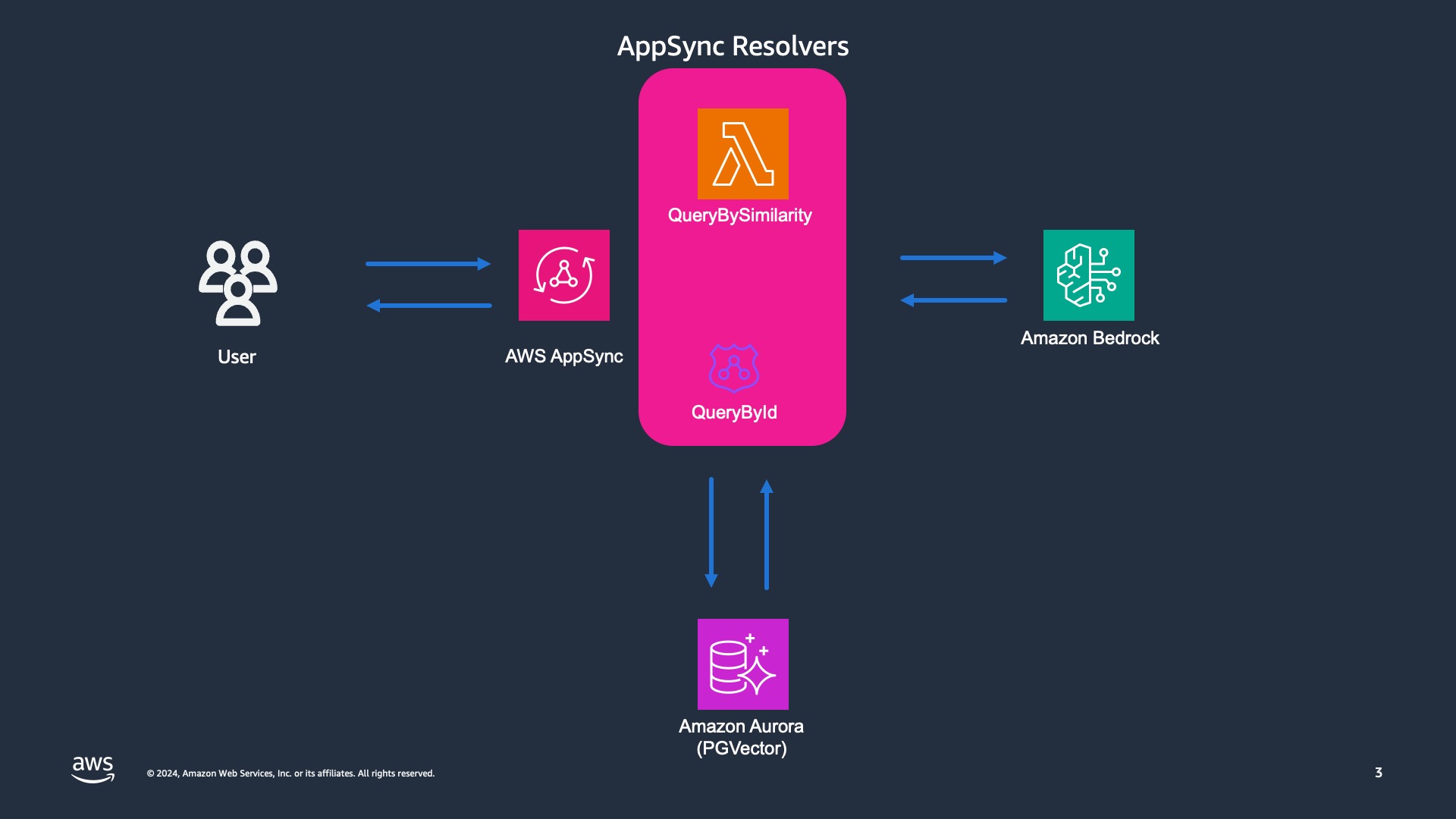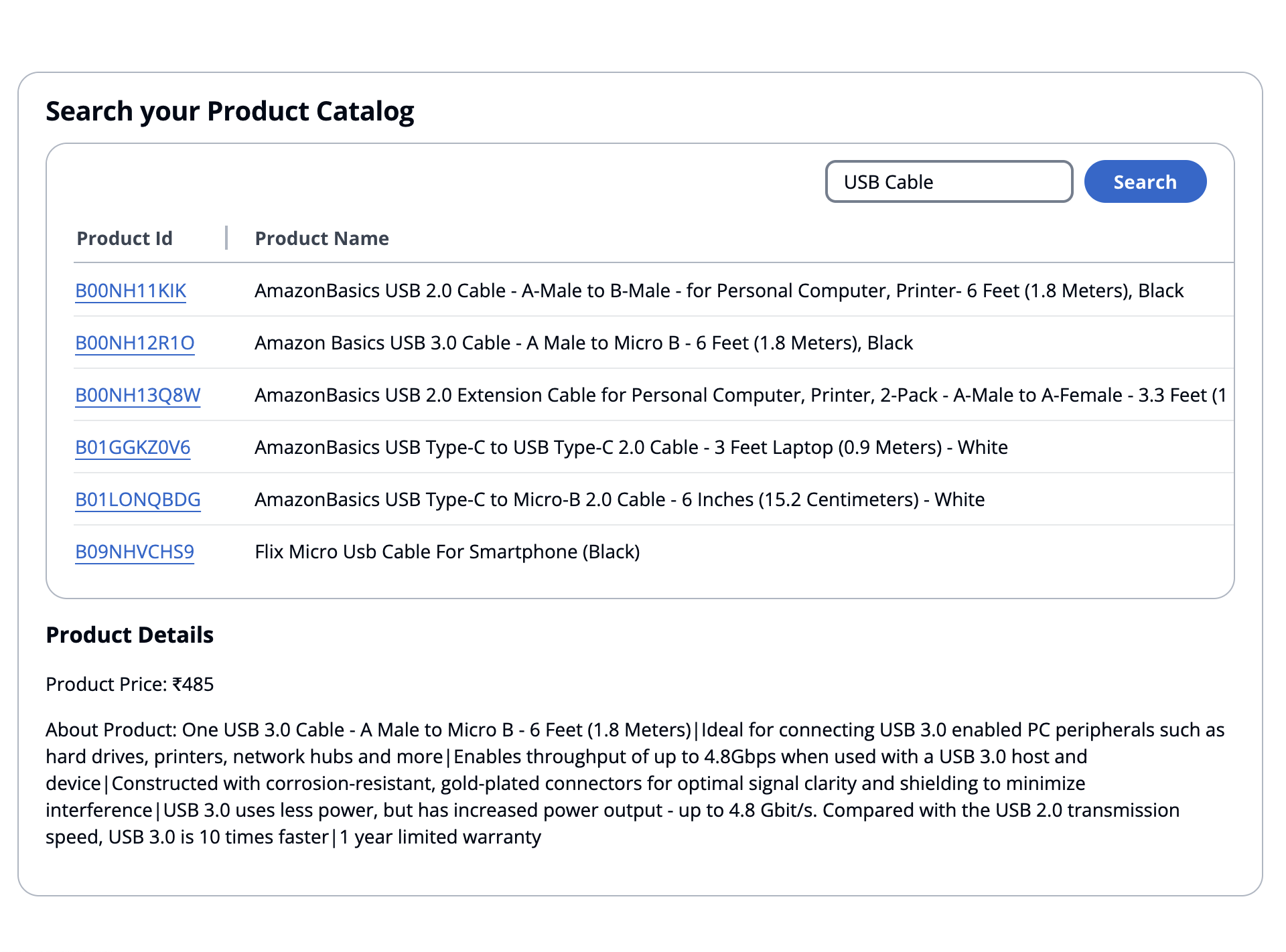This project implements search similarity with AWS AppSync as the frontend with PostGres RDS Datasource. We use the PostGreSQL PGVector extension for storing embeddings of records.
Warning Please note that the code here for the purpose of demonstration and should not be used in production.
The example dataset to use is an Amazon Product dataset. It has the following schema
type product {
product_id: String!
product_name: String!,
category: String,
discounted_price: String,
actual_price: String,
discount_percentage: String,
rating: String,
rating_count: String,
about_product: String
}
To run this sample, replace the file assets/amazon.csv with data from https://www.kaggle.com/datasets/karkavelrajaj/amazon-sales-dataset. You can also use other datasets, just change the above schema according to the data set schema.
You need to first enable Amazon Bedrock Titan Embeddings model in the region where this stack will be deployed. This is required to generate the vector embeddings. If you dont know how to do this see an explanation in the Amazon Bedrock documentation
This sample implements a CDK stack which consists of a database stack implemented using RDS PostGresSQL, a stack for importing data using ECS Tasks, and an API layer using AWS AppSync.
Install the packages - from the root directory execute
npm install
Boostrap the cdk by running cdk bootstrap also in the project root, NOTE: make sure you are running Node<21.0.0
To deploy the database stack use the following command
cdk deploy RDSStack
This command will output the cluster information, secret arn and all the other properties you will need.
Accept the security prompt ' Do you wish to deploy these changes (y/n)? y'
After you deploy the cluster, you need to enable the PGVector extension. Using the cluster and secret details from the above command, login to the RDS Query Editor and execute the following command. If you dont know how to do this refer to the Query Editor Docs
CREATE EXTENSION IF NOT EXISTS vector;
Next deploy the import data stack using the following command, again from the root of the project
cdk deploy ImportDataStack
This task requires docker desktop to be running as it builds a docker image to run the import task of ECS. One of the outputs of the stack is an arn for a step function state machine, which you feed into the next command.
After this stack is deployed, execute the stepfunction
aws stepfunctions start-execution --state-machine-arn <STATE-MACHINE-ARN>
The step function executes two ecs tasks. The first one reads the product data from s3 and creates a new file with necessary embeddings. A second task imports the data with embeddings into the RDS PostGresSQL database.
Wait for the step function to complete. You can check the state in the aws console or from the command line by executing the following
aws stepfunctions describe-execution --execution-arn <EXECUTION-ARN>
Check if the data is populated within RDS using the RDS query editor to list records in the "product_info" table.
Navigate to the folder lib/amp-client. You can deploy the AppSync middleware that connects to the database using this stack. We will create a sandbox environment to test this by running the following
npm install
npx ampx sandbox --debug true
The above command will deploy the necessary backend for connecting to the database. If your not familiar with Amplify Gen2, its worth reading about Here
Run the amplify webserver client by executing
npm run dev
and navigate to the output url in a browser where can then use the functionality of the search application.

